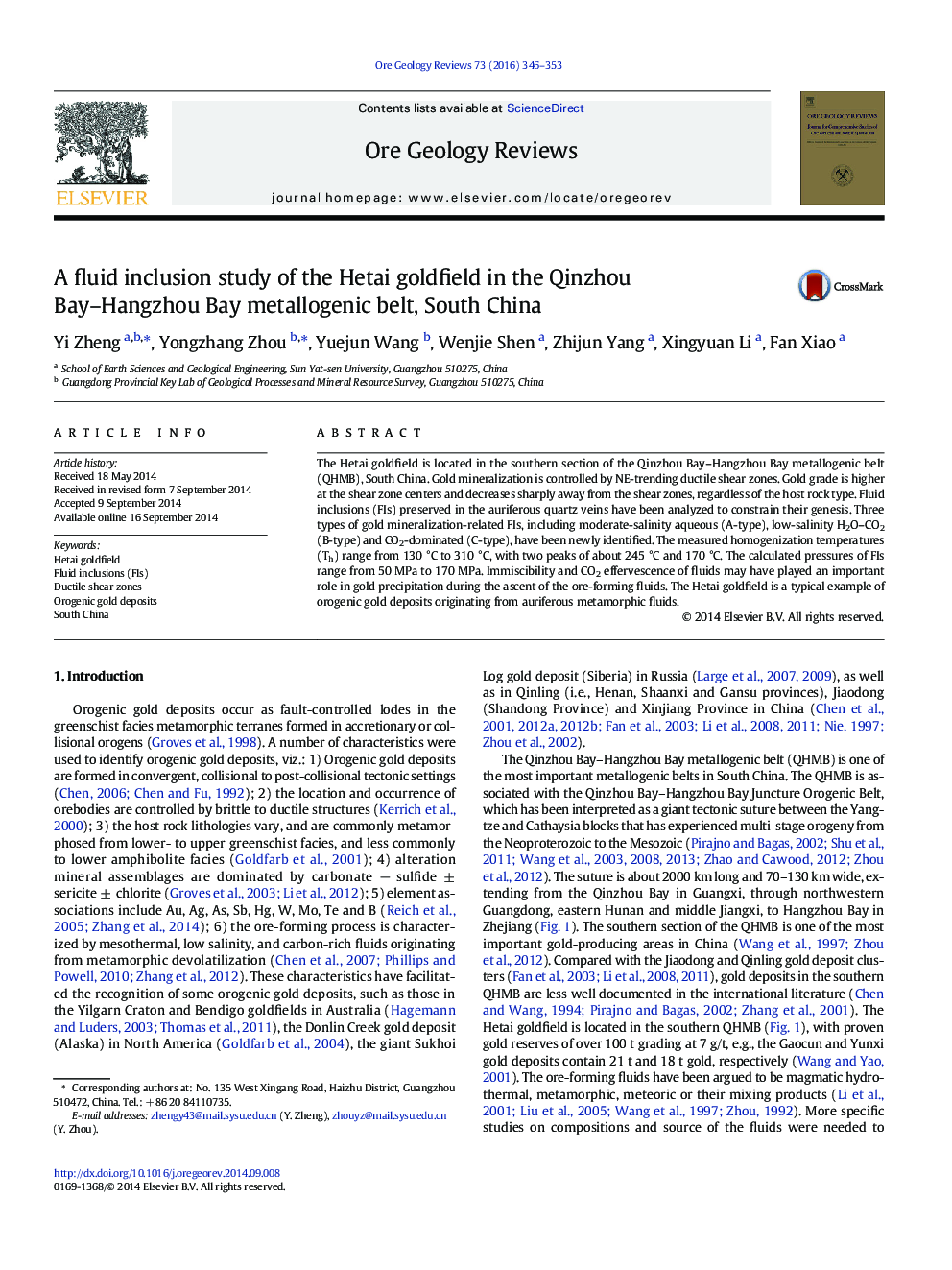| Article ID | Journal | Published Year | Pages | File Type |
|---|---|---|---|---|
| 4696925 | Ore Geology Reviews | 2016 | 8 Pages |
•The Hetai goldfield in South China is a structural controlled lode system.•The deposit was formed by metamorphic-devolatilized CO2-rich fluids.•Immiscibility and CO2 effervescence of fluids are the key to gold precipitation.•The Hetai goldfield resembles typical orogenic gold deposits in the world.
The Hetai goldfield is located in the southern section of the Qinzhou Bay–Hangzhou Bay metallogenic belt (QHMB), South China. Gold mineralization is controlled by NE-trending ductile shear zones. Gold grade is higher at the shear zone centers and decreases sharply away from the shear zones, regardless of the host rock type. Fluid inclusions (FIs) preserved in the auriferous quartz veins have been analyzed to constrain their genesis. Three types of gold mineralization-related FIs, including moderate-salinity aqueous (A-type), low-salinity H2O–CO2 (B-type) and CO2-dominated (C-type), have been newly identified. The measured homogenization temperatures (Th) range from 130 °C to 310 °C, with two peaks of about 245 °C and 170 °C. The calculated pressures of FIs range from 50 MPa to 170 MPa. Immiscibility and CO2 effervescence of fluids may have played an important role in gold precipitation during the ascent of the ore-forming fluids. The Hetai goldfield is a typical example of orogenic gold deposits originating from auriferous metamorphic fluids.
